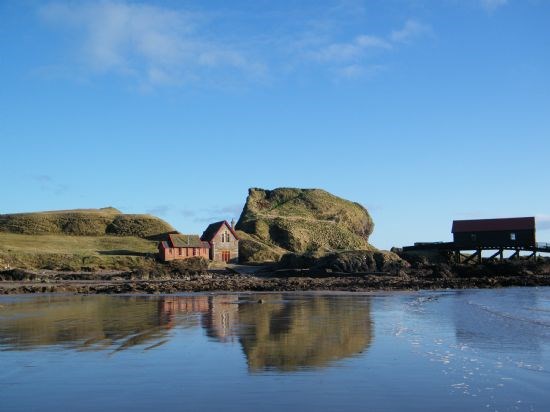Heritage
Welcome to Dunaverty. The name is Gaelic and several interpretations have been suggested, including Dun Abhartaigh, the Fort of the Abhairtach, an ancient powerful tribe.
Gaelic was the customary language in Kintyre from about the 5th Century AD until the 17th century, when Scots-speaking families from Ayrshire and Renfrewshire were settled in the southern part of the peninsula.
There were still a few Gaelic speakers in Southend even into the mid-20th century.Dunaverty was an obvious choice for fortification. Formed of conglomerate rock, it is a natural stronghold, being protected on three sides by cliffs and sea. The summit is accessible only from the north, across a narrow path.
Southend boasts a rich farming heritage too; with many farming families going back many generations in the area.
The old Lifeboat Station, situated at the end of Dunaverty Beach has many tales to tell; now converted into beautiful holiday accommodation.
As you drive around the coast from the village you will also notice the imposing Keil Hotel, about 1-mile South of the village. Now closed, it has an extremely interesting past, from war-time hospital in the early 20th Century, to sailors landmark, it's a fascinating place. Along this stretch of road you will also find many other interesting landmarks; the remains of the old Keil School - burnt to the ground in 1924; Southend cemetary containing an ancient chapel, and grave-stones; St Columbus footprints and Keil Caves, to mention just a few!
Check out the 'Sightseeing' tab, in the 'Things to do' section for more information...
